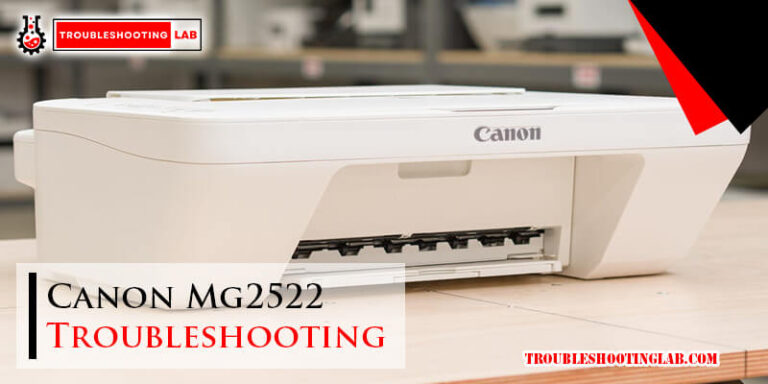Ge Washer Top Load Troubleshooting: Expert Solutions for Efficient Cleaning
To troubleshoot a GE washer top load, check for unbalanced loads and ensure proper leveling. Is your GE washer top load giving you trouble?
Perhaps you’re experiencing issues with unbalanced loads or improper leveling. Don’t worry, troubleshooting these problems can be straightforward. We will explore common issues that may arise with GE top load washers and provide you with solutions to get your machine back up and running smoothly.
By following these simple steps, you can quickly diagnose and resolve any issues affecting the performance of your GE washer. Let’s dive in and get your laundry routine back on track.

Common Issues With Ge Top Load Washers
Not Draining Properly
Water not draining out of GE top load washers can indicate a clogged drain hose or pump.
Check for any obstructions and ensure the drain hose is not kinked.
A malfunctioning drain pump may also be the cause of the issue.
Excessive Vibration And Noise
Too much vibration or noise during the wash cycle can result from an unbalanced load.
Make sure the load is distributed evenly to prevent excessive movement.
Check that the washer is level on the floor to reduce vibrations and noise.
Failure To Agitate Or Spin
If the washer fails to agitate or spin, it could be due to a malfunctioning lid switch.
Check the lid switch for continuity with a multimeter to determine if it needs replacement.
Issues with motor coupling or drive belt could also cause the washer to not agitate or spin properly.
Troubleshooting Steps
Troubleshooting Steps:
Check For Drainage Obstructions
Ensure the GE washer is unplugged before inspecting for clogs in the drainage hose.
Balance The Washing Machine
Use a level to check if the washer is stable on the floor for proper operation.
Inspect The Agitator And Drive Belt
Examine the agitator for damages and the drive belt for any signs of wear.
Maintenance Tips For Efficient Cleaning
Maintenance is crucial for the efficient functioning of your GE top-load washer and ensuring your laundry comes out spotlessly clean. By following some simple maintenance tips, you can troubleshoot potential issues and keep your washer in peak condition. Let’s explore essential maintenance practices for top load GE washers to ensure efficient cleaning.
Regular Cleaning Of The Washer Tub
Periodically clean the washer tub to prevent the buildup of dirt, grime, and detergent residues. Wipe down the interior of the tub using a mild detergent and warm water. Ensure to clean the inner drum, agitator, and areas where dirt and residue might accumulate. Regular cleaning prevents odors and keeps the washer in good working condition.
Using The Right Detergent And Water Temperature
Using the appropriate detergent and water temperature is key to efficient cleaning. Utilize high-efficiency (HE) detergent specifically formulated for top-load washers. Follow the manufacturer’s recommendations regarding the amount of detergent to use. Also, use the correct water temperature, typically indicated on the garment labels, to ensure effective cleaning and prevent detergent buildup.
Preventing Overloading Of The Washer
Overloading the washer can lead to inefficient cleaning and potential damage to the machine. Avoid overloading to allow ample space for the clothes to move freely and come into contact with the cleaning agents. Refer to the manufacturer’s manual for the recommended load capacity and adhere to it to ensure proper cleaning and prevent strain on the machine.
Professional Assistance And Support
When it comes to troubleshooting your GE washer top load, sometimes you might need professional assistance and support. This can be especially helpful if you have tried various troubleshooting methods on your own but still can’t seem to fix the issue. Below, we’ll explore two options for getting professional help: contacting GE customer service and seeking help from authorized technicians.
Contacting Ge Customer Service
If you’re experiencing problems with your GE washer top load, one of the first steps you can take is to reach out to GE customer service. Their dedicated team of experts can provide guidance and support tailored to your specific issue. Contacting GE customer service is a straightforward process, and it can help you get back on track with your washer.
Here’s what you need to do:
- Gather your GE washer top load model number and serial number. This information is usually located on the back of the machine or inside the door.
- Visit the GE Appliances website and navigate to the “Support” section.
- Click on the “Contact Us” page to find the appropriate contact information for your region.
- Call the provided phone number or submit an online form to initiate contact with a GE customer service representative.
Remember to be prepared with a detailed description of the problem you’re experiencing, as well as any error codes that may be displayed on the control panel. This will help the customer service representative assist you more effectively.
Seeking Help From Authorized Technicians
If your GE washer top load troubleshooting efforts have been unsuccessful so far, it’s time to consider seeking help from authorized technicians. These professionals are specially trained to diagnose and fix issues with GE appliances, including top load washers. They have the expertise and experience necessary to accurately identify the root cause of the problem and provide a reliable solution.
To find authorized technicians in your area, follow these steps:
- Visit the GE Appliances website and navigate to the “Support” section.
- Click on the “Schedule Service” option.
- Enter your location details to see a list of authorized service providers near you.
- Choose a provider that suits your needs, schedule an appointment, and wait for their professional assistance.
Authorized technicians have access to genuine GE replacement parts, ensuring that any necessary repairs are done with high-quality components. Additionally, their familiarity with GE washers allows them to efficiently troubleshoot and resolve issues, saving you time and frustration.
Ensuring Long-term Washer Performance
When it comes to your GE washer, ensuring long-term performance is essential to prevent any disruptions to your laundry routine. By taking proactive steps, such as proper installation, understanding the washer’s manual and features, and troubleshooting common issues in a timely manner, you can prolong the lifespan of your washer and enjoy its optimal performance for years to come.
Proper Installation And Leveling
One of the first steps to ensuring long-term performance for your GE washer is proper installation and leveling. When you install the washer, make sure it is placed on a solid and level surface. This helps to prevent excessive vibration during the spin cycle, which can cause damage to the machine and impact its performance over time. Refer to the washer’s manual for specific instructions on how to level the machine correctly to avoid any imbalances.
Understanding The Washer’s Manual And Features
Another important aspect of maximizing your GE washer’s performance is understanding its manual and features. Take the time to read through the manual thoroughly to familiarize yourself with the different wash cycles, options, and settings available. Understanding the specific features of your washer allows you to utilize them effectively and tailor your laundry routines accordingly.
Table:
| Key Features | Description |
|---|---|
| Multiple Wash Cycles | Allows you to choose the appropriate cycle for different types of fabrics and levels of dirtiness. |
| Customizable Options | Enables you to adjust water temperature, spin speed, and other settings to meet your specific laundry needs. |
| Delay Start | Allows you to set a delayed start time, so your laundry can finish at a convenient time. |
By making use of these various features, you can optimize your washer’s performance, save energy, and achieve the best possible cleaning results for your laundry.
Troubleshooting Common Issues
Ordered List:
- Unbalanced Load: If your washer is shaking excessively during the spin cycle, it may be due to an unbalanced load. Ensure that you distribute the clothes evenly in the drum to maintain balance.
- Drainage Problems: If you notice water pooling at the bottom of the tub or your clothes are overly wet after the cycle, check for any blockages in the drain hose or pump.
- Strange Noises: If your washer is producing unusual sounds, such as grinding or squeaking, it could indicate a problem with the motor, belts, or other components. Refer to the manual for troubleshooting steps or contact a professional technician for assistance.
- Leakage: If you detect any water leakage around your washer, inspect the hoses, fittings, and connections for any signs of damage or looseness. Tighten or replace as necessary.
Bold Sentences:
By following these simple yet crucial steps of proper installation, understanding your washer’s manual and features, and addressing common issues promptly, you can ensure that your GE washer operates smoothly and efficiently, delivering clean and fresh laundry load after load. Taking care of your washer now will save you time and money in the long run, providing you with a stress-free laundry experience for years to come.
Frequently Asked Questions For Ge Washer Top Load Troubleshooting
Why Is My Ge Washer Not Spinning?
If your GE washer is not spinning, it could be due to a faulty lid switch, drive belt, or motor coupling.
Conclusion
Troubleshooting your GE top load washer doesn’t have to be daunting. By following the steps outlined in this guide, you can quickly diagnose and resolve common issues. Remember to consult the user manual for specific instructions and reach out to a professional if needed.
Keep your washer running smoothly with these simple tips.





